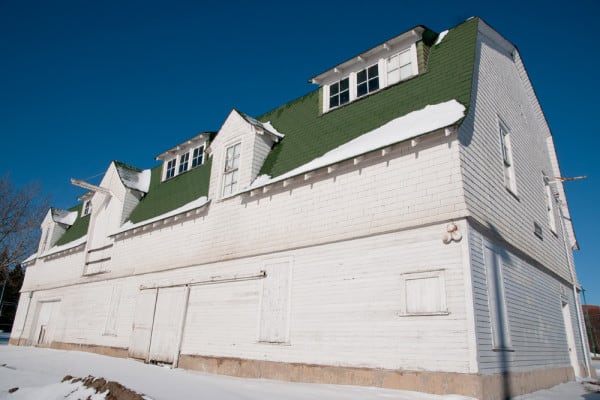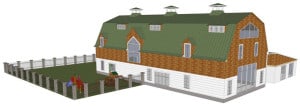
This 100-year-old seed barn could potentially be reused as a childcare facility.
The University of Saskatchewan has a plan to double its number of childcare spaces by 2014, says Associate Vice-President Student Affairs David Hannah.
The design, which consists of two separate components, is projected to cost between $4 and $5 million and would increase the university’s total licensed childcare spaces to 220, up from 110.
The first component of the plan includes the renovation and expansion of the current university daycare centre located in the Education Building and would add 46 spaces, all of which would be for children 30 months to 6 years old.
Meanwhile, the second component is a new, standalone facility at College Quarter that would provide 64 spaces, 12 for infants and 52 for children 18 months to 6 years old. Early drawings of the facility have incorporated the reuse of the century-old seed barn currently sitting by the volleyball courts on College Drive.
“We’re keeping our fingers crossed,” Hannah said of the possibility of relocating and refitting the seed barn. “Our architects are pretty pumped.”

An early architectural rendering of refitted seed barn.
“It’s a sustainability thing for the university,” he said. “There’s all that good wood in there, it’s a beautiful old building and we would rather reuse it and preserve it than knock it down.”
Recently, architectural drawings for both components were sub-contracted to AODBT Architecture and Interior Design, a Saskatoon-based firm with previous experience designing modern childcare spaces. Estimates show the Education Building renovation and expansion would cost $1.3 million and the seed barn refitting would run just over $3 million.
Last May, the provincial government allocated $1.4 million in capital for childcare spaces at the U of S, and Hannah suggests that the university, faculty, students and community donors should provide the rest.
Ideally, he explained, funding for university childcare should come from “roughly equal donations from the government, the university, students and donors through a fundraising campaign.”
The university has already committed to confirming a specific amount — probably in the range of $1 million — before summer. And a fundraising campaign targeting alumni is set to kick-off soon.
After asking the U of S students’ union in December to implement a fee hike that would have required an undergraduate referendum, Hannah was denied. Now, he is simply asking the union to back his request that the university implement a blanket increase for all students.
He said this would be “a nominal fee, possibly in the neighbourhood of five to 10 dollars per term, per student.… This would be a university-imposed fee, not a USSU fee.”
The goal, he says, is to take the plan to the board of governors for preliminary approval this spring and to lock up the majority of funding before the end of the year.
Early in the 2010-11 academic year, the USSU executive wrote a letter to President Peter MacKinnon advocating for more childcare spaces, which is essentially what sparked this project, Hannah said.
“For [then-president] Chris Stoicheff and that executive, this was a really high-priority issue.”
However, with the USSU’s bottom line still in the red due to the Place Riel project, president Scott Hitchings says it is not something he feels the USSU should dish out for.
“We’ve shown no signs that we think students should pay for this,” he said, adding that students’ council will be discussing whether or not to support Hannah’s pitch at the Jan. 26 meeting.
Additionally, before he agrees to support an increase, Hitchings said he wants to see official numbers for how many openings will be available to specific groups like undergraduates and aboriginal students, which is still undetermined.
“I have no idea what [undergraduate] students think about this,” Hitchings said, “but we will find out from each college at council.”
As of now, U of S childcare per capita ranks roughly in the middle of the pack compared to other Canadian universities, said James Pepler, an administrative staffer who did research for the project. But if the university doesn’t act soon, he added, we could find ourselves trailing.
—
Photo: Raisa Pezderic/The Sheaf
Graphic: U of S